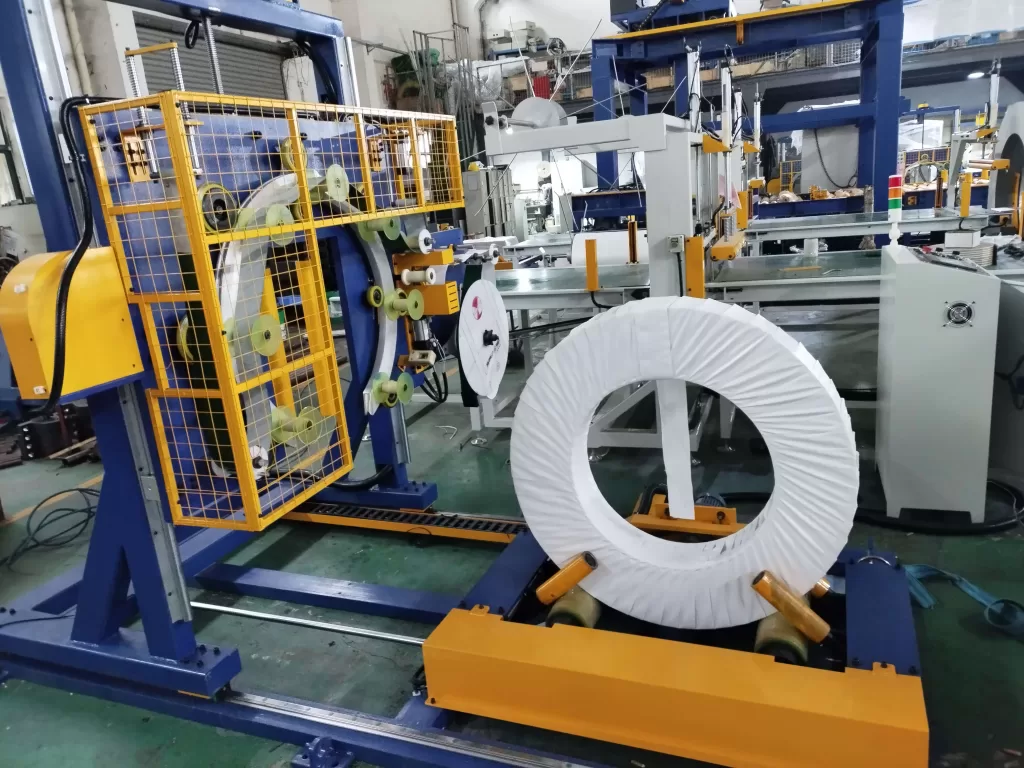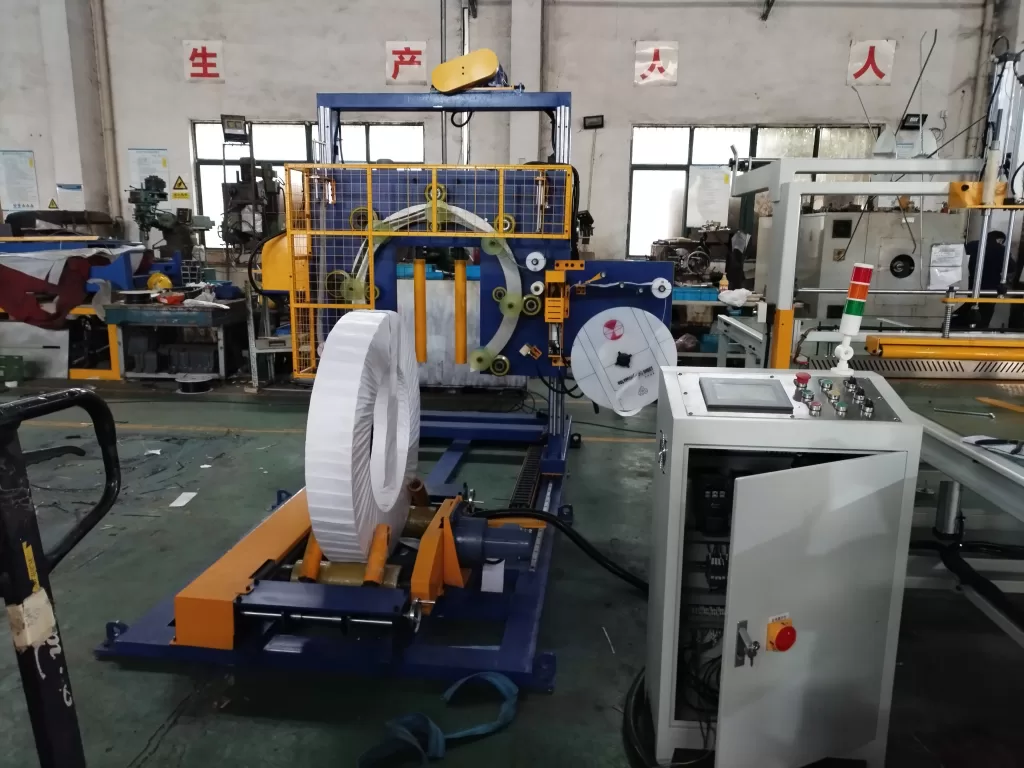Mastering Tension Control in Steel Wire Coil Wrapping: A Practical Guide
Proper packaging is crucial for protecting steel wire coils during handling, storage, and transport. A common challenge in automated coil wrapping is achieving consistent and optimal packing tension, especially when dealing with varying coil dimensions. This guide explores strategies and techniques to ensure effective tension control using steel wire coil packing machines.

1. Understanding Steel Wire Coil Packaging Parameters
Steel wire coils typically have dimensions within these ranges:
- Outer Diameter (OD): 500mm - 900mm
- Width: 300mm - 900mm
The choice of wrapping machine is critical. For instance, wrapping a smaller OD coil (e.g., 500mm) on a machine designed for larger coils (requiring perhaps a 1900mm ring for a 900mm width) can lead to difficulties in maintaining consistent stretch film tension.
2. The Problem: Poor Tension Control Effects
Inconsistent or inadequate tension during the wrapping process can result in a poorly packaged product. As demonstrated in the video below, using a large wrapping ring for a relatively small coil OD without proper tension management often leads to wrinkles and loose wrapping, compromising the integrity of the packaging.
This not only looks unprofessional but can fail to adequately protect the steel wire coil.
3. Key Strategies for Optimizing Packing Tension
Achieving a secure and uniform wrap requires careful control over the wrapping process. Here are essential strategies:
3.1. Set Correct Initial Tension
Apply the right amount of initial tension to the wrapping material (like stretch film). This ensures the film starts conforming tightly to the coil's shape immediately. Incorrect initial tension (too loose or too tight) is a common source of wrapping problems.
3.2. Implement Controlled Acceleration and Deceleration
Ensure the wrapping machine uses smooth, controlled acceleration and deceleration phases for the wrapping material feed. Gradual starts and stops prevent sudden jerks or slack in the material, which can cause uneven or loose wraps.
3.3. Monitor and Adjust Tension Dynamically
Tension requirements can change during the wrap cycle. As the film wraps around the coil, the effective diameter changes, potentially altering the applied tension. Continuously monitor the wrap quality and adjust tension settings as needed to maintain consistency. Some advanced systems can do this automatically.
3.4. Utilize Multi-Layer Wrapping
Applying multiple layers of wrapping material, ensuring consistent tension between each layer, helps build a robust, stable, and uniformly secure package.
3.5. Fine-Tune Machine Settings
Leverage tension control knobs or digital settings on the coil packing machine. These allow for precise adjustments based on the specific coil dimensions, the type of wrapping material used, and the desired firmness of the final package. Operators should optimize these settings for each application.
3.6. Perform Regular Machine Maintenance
Consistent machine performance is vital for reliable tension control. Regularly maintain components like motors, drives, rollers, and idlers. Wear and tear or decreased efficiency in any part can negatively impact the ability to maintain set tension levels.
3.7. Consider Advanced Tension Control Systems
Modern coil wrapping machines may incorporate built-in tension sensors linked to the PLC (Programmable Logic Controller). This allows for real-time feedback and more dynamic, automatic adjustments to tension throughout the wrapping cycle, adapting to irregularities or changes in diameter.
3.8. Ensure Proper Operator Training
Well-trained operators are crucial. They need to understand how to correctly set initial parameters, monitor the wrapping process visually, identify potential issues, and make subtle adjustments beyond the default settings to achieve the best results.
4. Enhancing Tension Control with Specialized Devices
To overcome challenges like the big ring/small coil scenario, specialized components like a drawing back device tensioner can be integrated into the coil wrapping machine. This mechanism actively manages the film tension, ensuring a consistently tight wrap regardless of variations in wrapping diameter during the cycle.
The video below showcases a coil wrapping machine equipped with such a tensioner, demonstrating its effectiveness in producing a smooth, tightly wrapped package for both large and small coils.
By employing such a device, the machine maintains optimal stretch film tension, eliminating wrinkles and ensuring a secure package.
5. Basic Operational Checklist for Consistent Tension
Follow these fundamental steps during operation to help maintain good tension:
- Load and Secure the Coil: Properly place the steel wire coil onto the machine's supportive rollers and ensure it is securely positioned.
- Align the Wrapping Ring: Adjust the vertical height of the wrapping ring. Ensure the ring's inner diameter (ID) can pass through the coil's ID freely.
- Optimize Ring Position: Typically, lowering the ring's center point slightly (e.g., 20mm) below the coil's ID center can improve wrapping coverage, but consult machine guidelines.
- Set and Verify Tension: Adjust the tension controller (manual knob or digital setting) to the appropriate level for the specific coil and wrapping material. Perform a test wrap if necessary to verify the tension is correct before full operation.

steel packing machine6 6. Conclusion
Mastering tension control in steel wire coil packaging is essential for product protection and logistical efficiency. It requires a combination of the right machinery, appropriate settings, diligent maintenance, and skilled operation. By understanding the challenges and implementing the strategies outlined above, particularly utilizing advanced tensioning devices where needed, manufacturers can achieve consistently high-quality, secure coil packages.